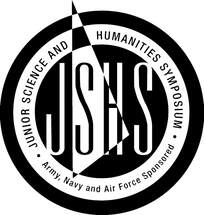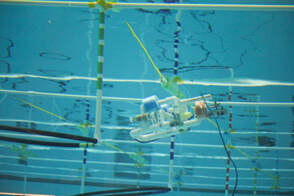Greater Philadelphia Junior Science & Humanities Symposium (JSHS)The JSHS is a regional research competition held on Temple University's Main Campus. The JSHS is a collaboration between The College of Science & Technology, the United States Departments of the Army, Navy, and Air Force, and the Academy of Applied Sciences. During the event, attendees enjoy a wide variety of STEM activities while engaging with invited speakers and STEM professionals. For more information about the national JSHS please click here.
|
Greater Philadelphia SeaPerch & SeaGlide ChallengeThe Greater Philadelphia SeaPerch and SeaGlide Challenge is an underwater robotic competition open to middle schools and high schools in the Pennsylvania, New Jersey, and Delaware region. The goal is to increase student interest in robotics, science, mathematics, engineering and technology and to introduce students to naval engineering. The challenge takes place in the spring of each year, but participating teams start working on their ROVs and Gliders in the fall. For more information about the Greater Philadelphia SeaPerch and SeaGlide Challenge please click here.
|
STEM SCHOLARS
The STEM Scholars program features individualized math curriculums to cater to each student's needs. The focus will be on strengthening weaknesses and reinforcing foundations to help students perform better in the present and future classes. This year's focus was on Data Science, Seaperch Science, and Seaperch, and the kids will do informative engineering projects to further their critical thinking and coding skills.
STEM Up
Academics:
The academic portion of STEM-UP is focused on the foundational subjects of Mathematics and the natural sciences (Biology, Chemistry, and Physics). These core subjects are further supplemented by additional coursework in 3-D design, electronics and computer programming, and scientific literature. All of these subjects will provide the foundation on which budding engineers and STEM professionals will be able to create their own scientific inquiries and carry them through to successful projects.
Mathematics:
This math curriculum emphasizes algebra and statistics. The overall goal of the program was to generate a foundation from which students could begin their foray into data analysis and interpretation.
Biology:
The class is designed in a sequence that covers major topics of biological sciences: molecular biology (cells, genes, and proteins), evolution, microbiology, human anatomy and physiology, and finally, ecology. The objective is that the students will learn about the intricacies of the living world, from the microscopic to macroscopic scales.
Chemistry:
Chemistry is all around us. The students will learn the Scientific Method of questioning to investigate the why, follow the data, test, then correct course as needed to form a final hypothesis. The students will start with the periodic table and build up their knowledge to understand complex chemical reactions.
Physics:
The class will cover the major topics in physics, starting with Newtonian mechanics all the way to Magnetic Fields, Electromagnetic Induction. To enhance learning, students will perform activities and labs to illustrate the concepts learned in the lecture.
Computer Science:
In this subject, students will use creative projects to help reinforce coding concepts. Students will be able to identify important electronic components such as resistors, capacitors, batteries, etc., and their respective functions. They will use this knowledge to design circuits and implement code to perform specific tasks.
Design:
The objective of the design curriculum is to introduce students to computer aid design. The course uses Tinker cad as the main learning tool/platform. It is the perfect introduction to constructive solid geometry. The objectives are that students will identify ways that design thinking can help solve problems and develop visual literacy and a vocabulary that can help express ideas.
Drones:
In this course, students will improve their programming skills to successfully fly drones through a defined path and analyze data collected during the flight.
Naval engineering:
The naval engineering portion of the program applies concepts of physics and engineering to real-world scenarios and challenges. Students will be tasked to theorize and eventually create remotely operated vehicles (ROV): Seaperch and Sea Glide. They will have the opportunity to test their ROVs in an aquatic environment and participate in a competition hosted by the US Navy.
JSHS and Carver Science Fair:
The students will be able to submit their research projects and potentially present at two events: the George Washington Carver Science Fair and the Junior Science and Humanities Symposium (JSHS). The Carver Science Fair is jointly sponsored by Temple University, The Academy of Natural Sciences, The School District of Philadelphia, and The Archdiocese of Philadelphia and aims to inspire students to pursue their own interests in the sciences. Sponsored by the U.S. Army, Navy, and Air Force, the Junior Science and Humanities Symposia (JSHS) Program is a STEM competition aimed at promoting experimentation and achievement on the high school level. With the support of faculty and staff and access to Temple’s state-of-the-art lab facilities, students will be able to engage in the scientific process, starting from their own research questions and eventually presenting their work at the fair and/or the regional JSHS research symposium. Furthermore, students will have the unique opportunity to collaborate with their peers and connect with other talented high school students in friendly competition.
The academic portion of STEM-UP is focused on the foundational subjects of Mathematics and the natural sciences (Biology, Chemistry, and Physics). These core subjects are further supplemented by additional coursework in 3-D design, electronics and computer programming, and scientific literature. All of these subjects will provide the foundation on which budding engineers and STEM professionals will be able to create their own scientific inquiries and carry them through to successful projects.
Mathematics:
This math curriculum emphasizes algebra and statistics. The overall goal of the program was to generate a foundation from which students could begin their foray into data analysis and interpretation.
Biology:
The class is designed in a sequence that covers major topics of biological sciences: molecular biology (cells, genes, and proteins), evolution, microbiology, human anatomy and physiology, and finally, ecology. The objective is that the students will learn about the intricacies of the living world, from the microscopic to macroscopic scales.
Chemistry:
Chemistry is all around us. The students will learn the Scientific Method of questioning to investigate the why, follow the data, test, then correct course as needed to form a final hypothesis. The students will start with the periodic table and build up their knowledge to understand complex chemical reactions.
Physics:
The class will cover the major topics in physics, starting with Newtonian mechanics all the way to Magnetic Fields, Electromagnetic Induction. To enhance learning, students will perform activities and labs to illustrate the concepts learned in the lecture.
Computer Science:
In this subject, students will use creative projects to help reinforce coding concepts. Students will be able to identify important electronic components such as resistors, capacitors, batteries, etc., and their respective functions. They will use this knowledge to design circuits and implement code to perform specific tasks.
Design:
The objective of the design curriculum is to introduce students to computer aid design. The course uses Tinker cad as the main learning tool/platform. It is the perfect introduction to constructive solid geometry. The objectives are that students will identify ways that design thinking can help solve problems and develop visual literacy and a vocabulary that can help express ideas.
Drones:
In this course, students will improve their programming skills to successfully fly drones through a defined path and analyze data collected during the flight.
Naval engineering:
The naval engineering portion of the program applies concepts of physics and engineering to real-world scenarios and challenges. Students will be tasked to theorize and eventually create remotely operated vehicles (ROV): Seaperch and Sea Glide. They will have the opportunity to test their ROVs in an aquatic environment and participate in a competition hosted by the US Navy.
JSHS and Carver Science Fair:
The students will be able to submit their research projects and potentially present at two events: the George Washington Carver Science Fair and the Junior Science and Humanities Symposium (JSHS). The Carver Science Fair is jointly sponsored by Temple University, The Academy of Natural Sciences, The School District of Philadelphia, and The Archdiocese of Philadelphia and aims to inspire students to pursue their own interests in the sciences. Sponsored by the U.S. Army, Navy, and Air Force, the Junior Science and Humanities Symposia (JSHS) Program is a STEM competition aimed at promoting experimentation and achievement on the high school level. With the support of faculty and staff and access to Temple’s state-of-the-art lab facilities, students will be able to engage in the scientific process, starting from their own research questions and eventually presenting their work at the fair and/or the regional JSHS research symposium. Furthermore, students will have the unique opportunity to collaborate with their peers and connect with other talented high school students in friendly competition.

